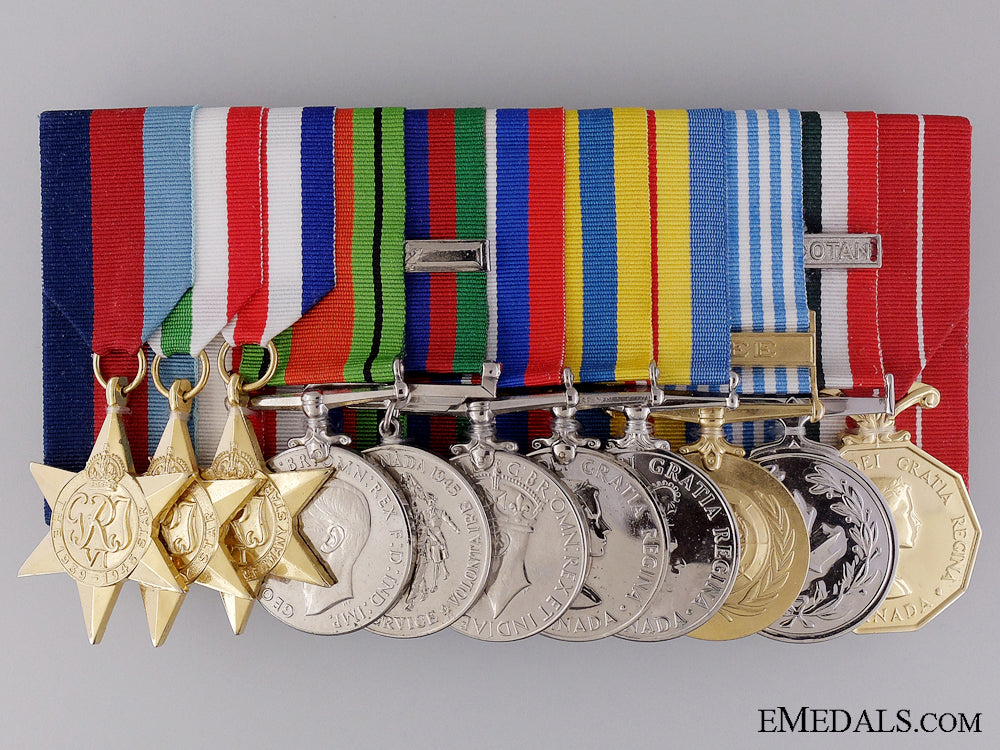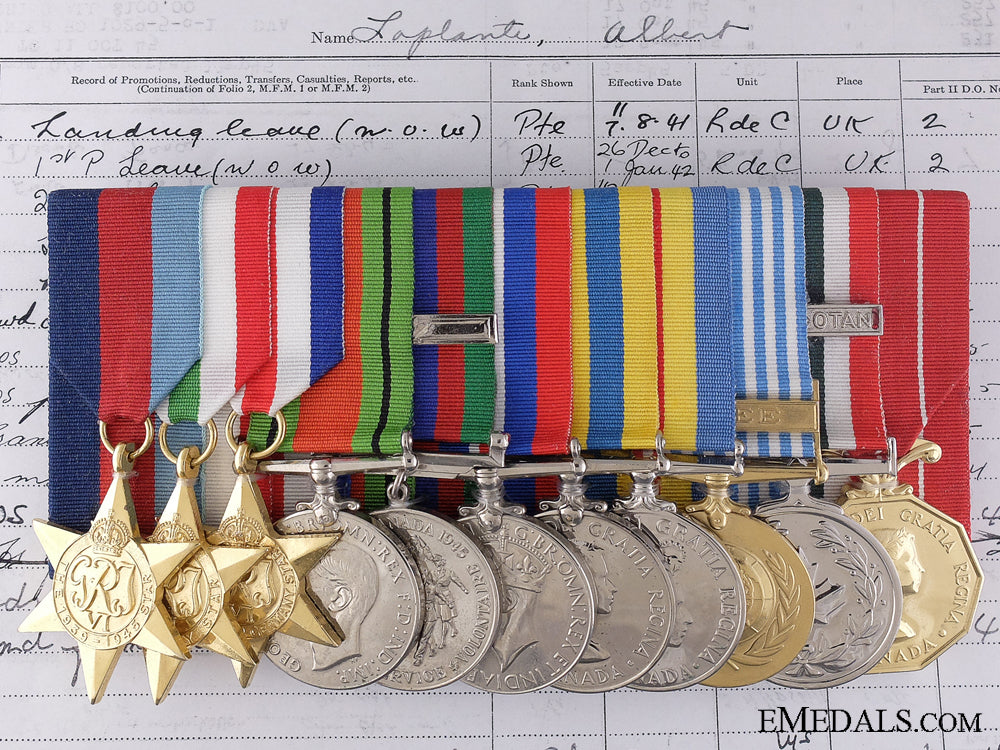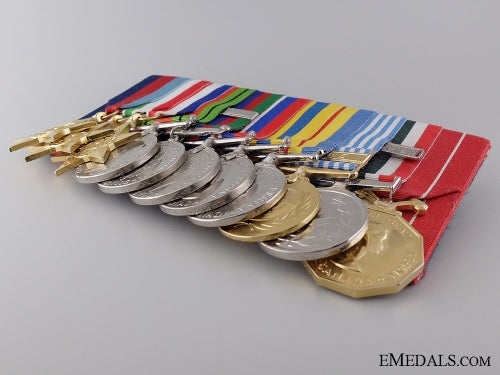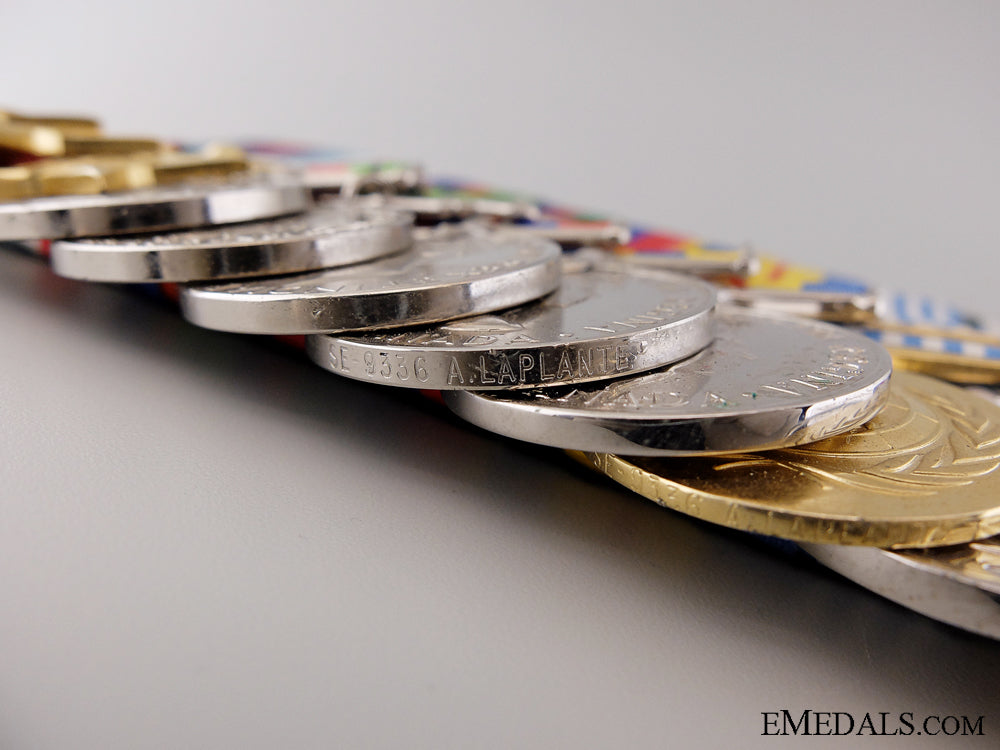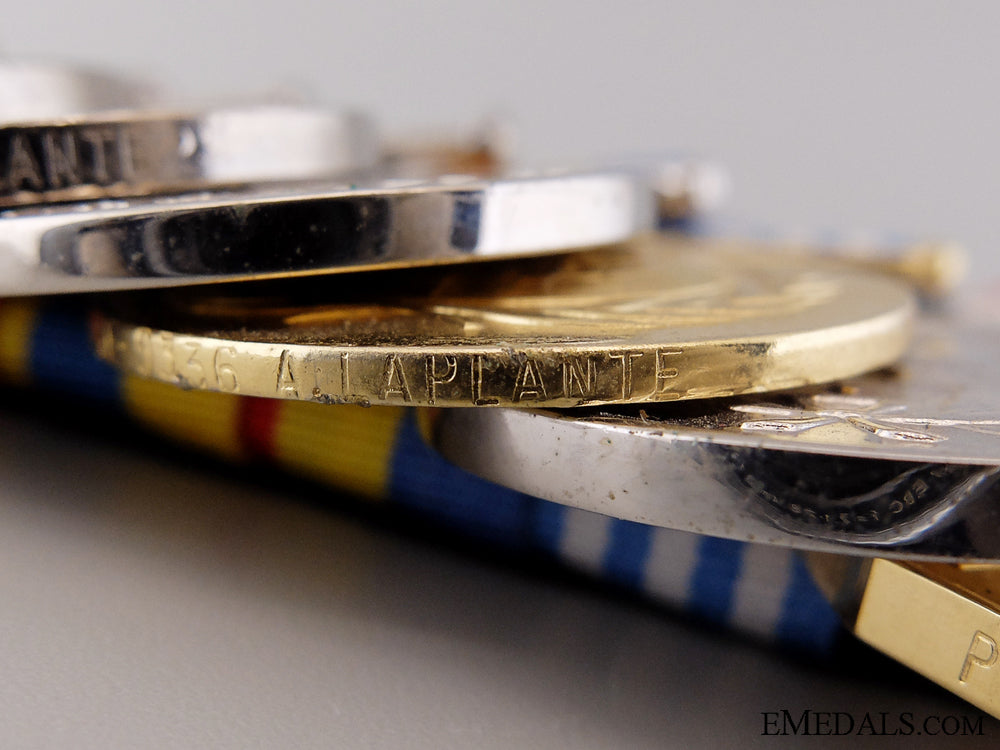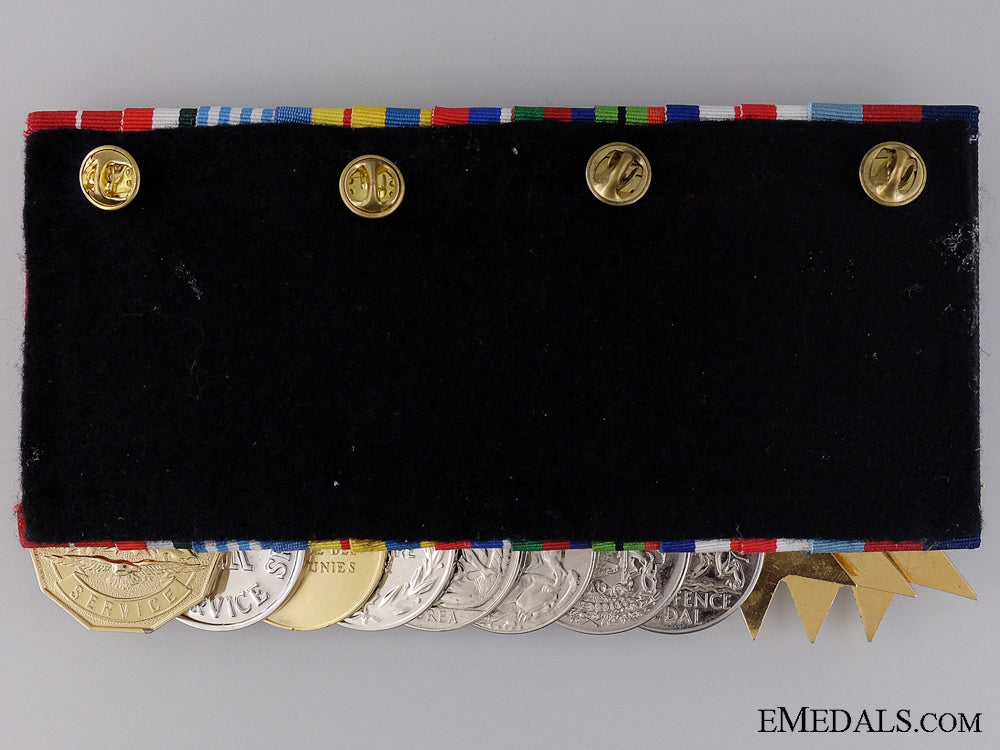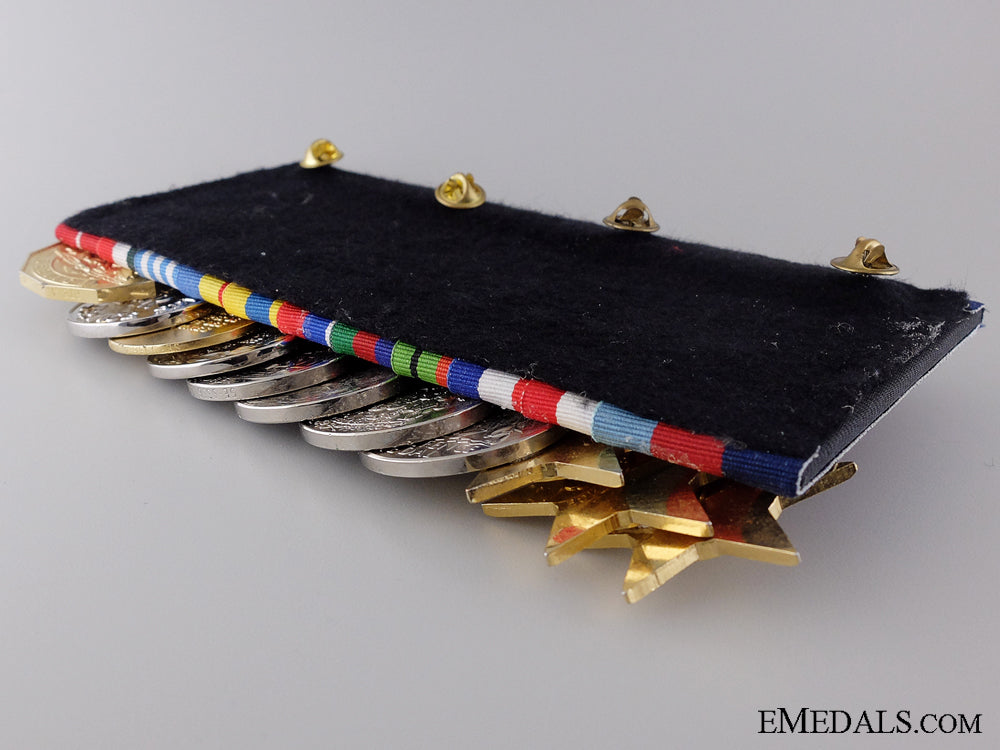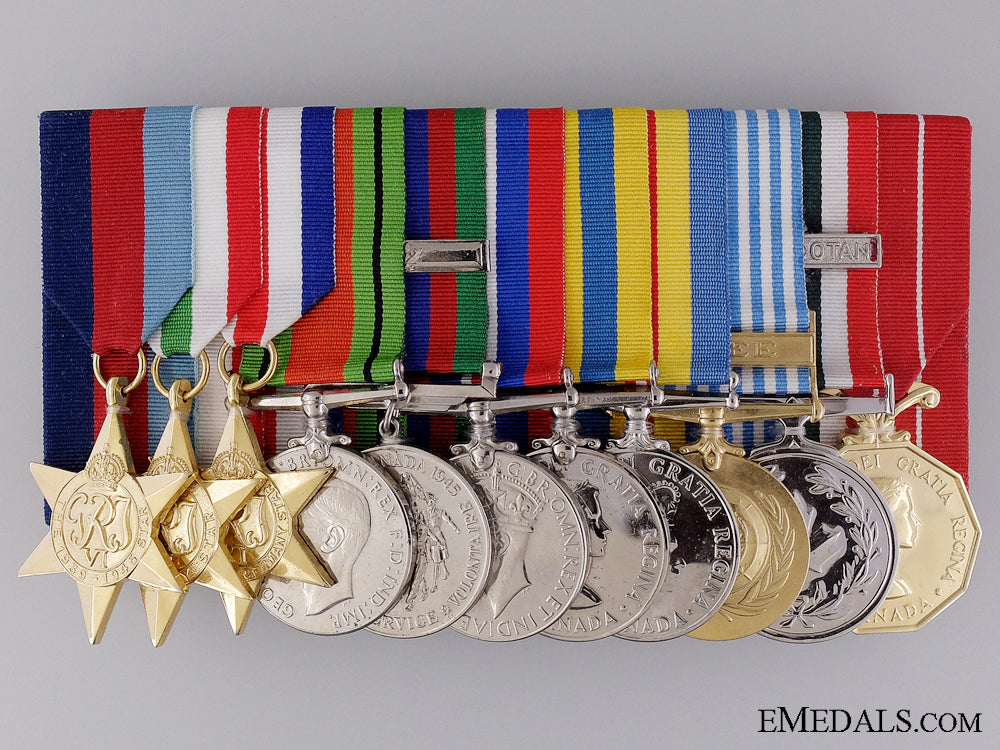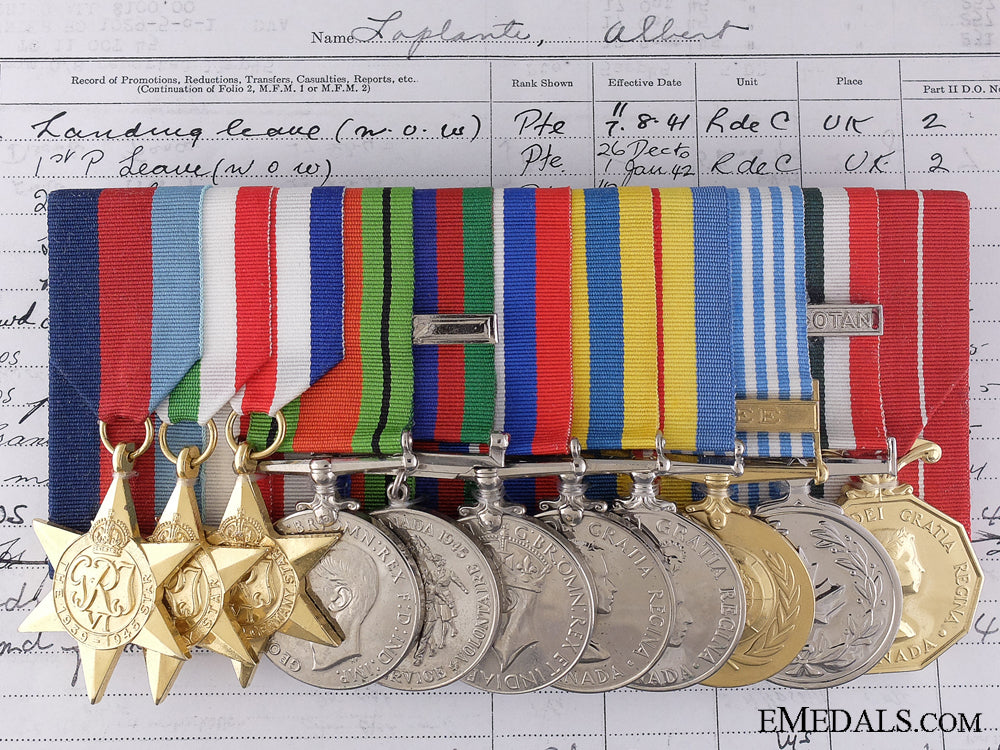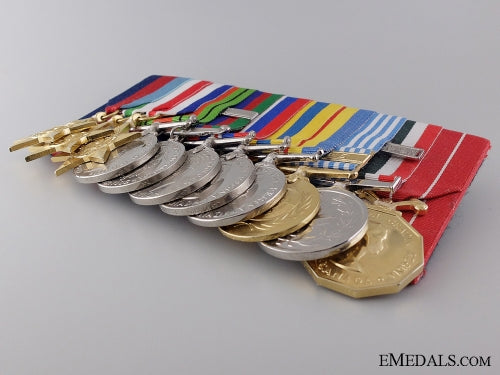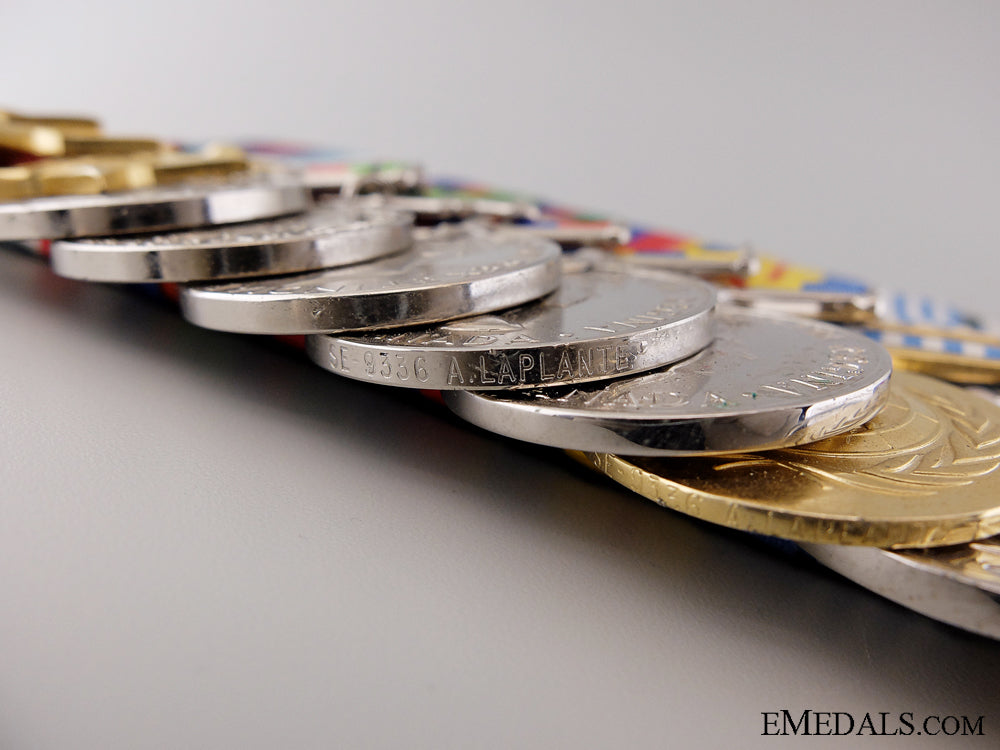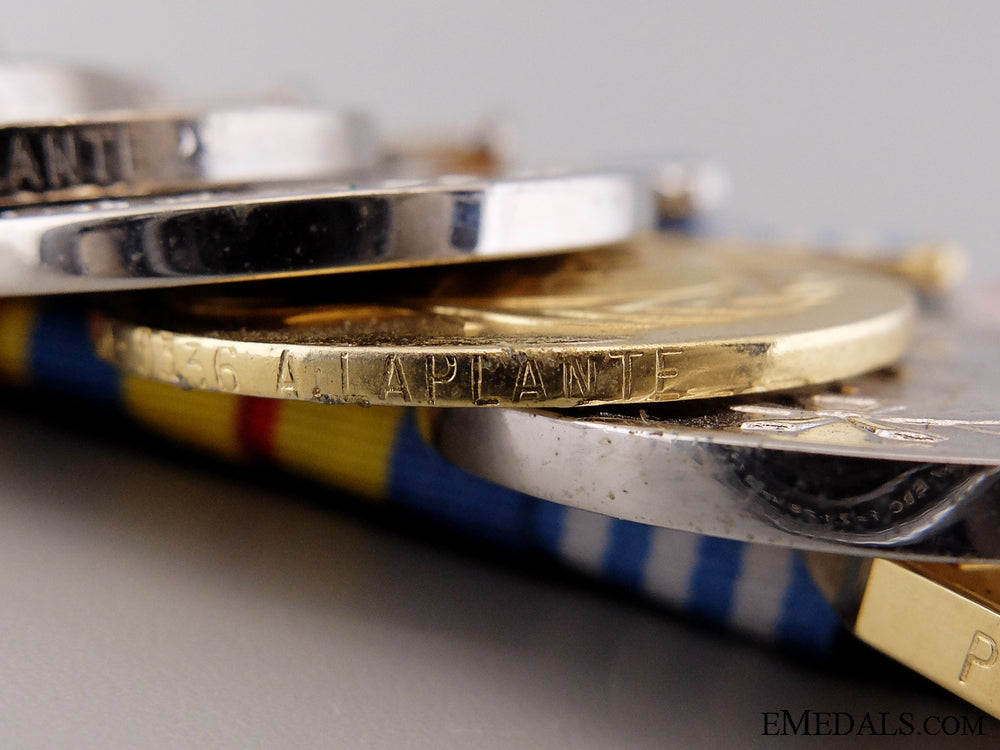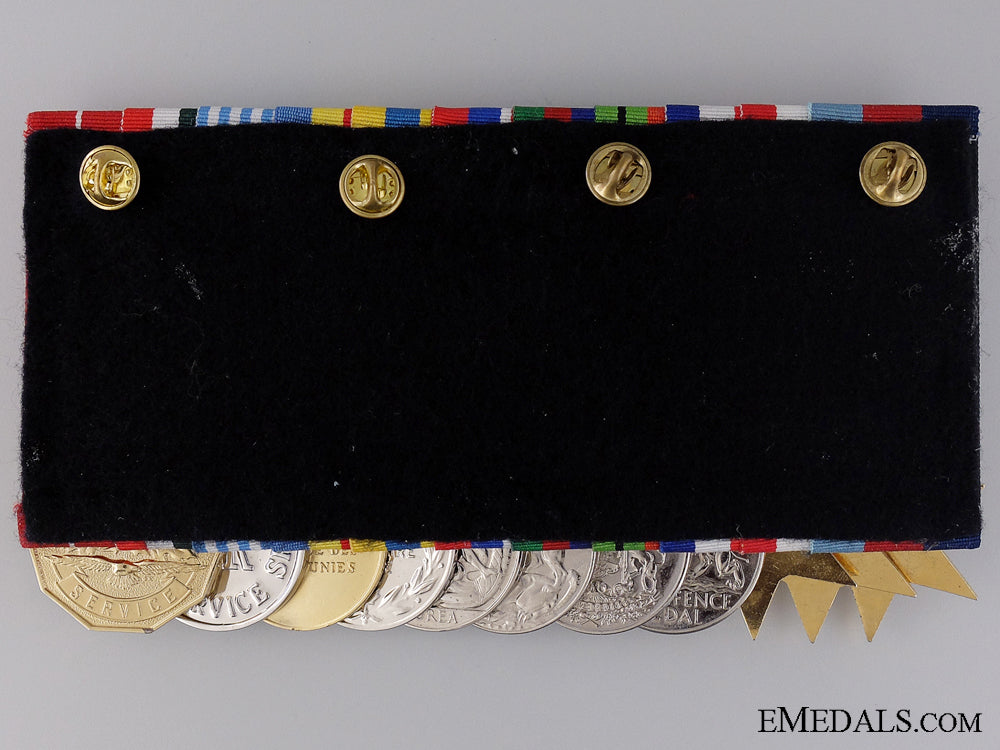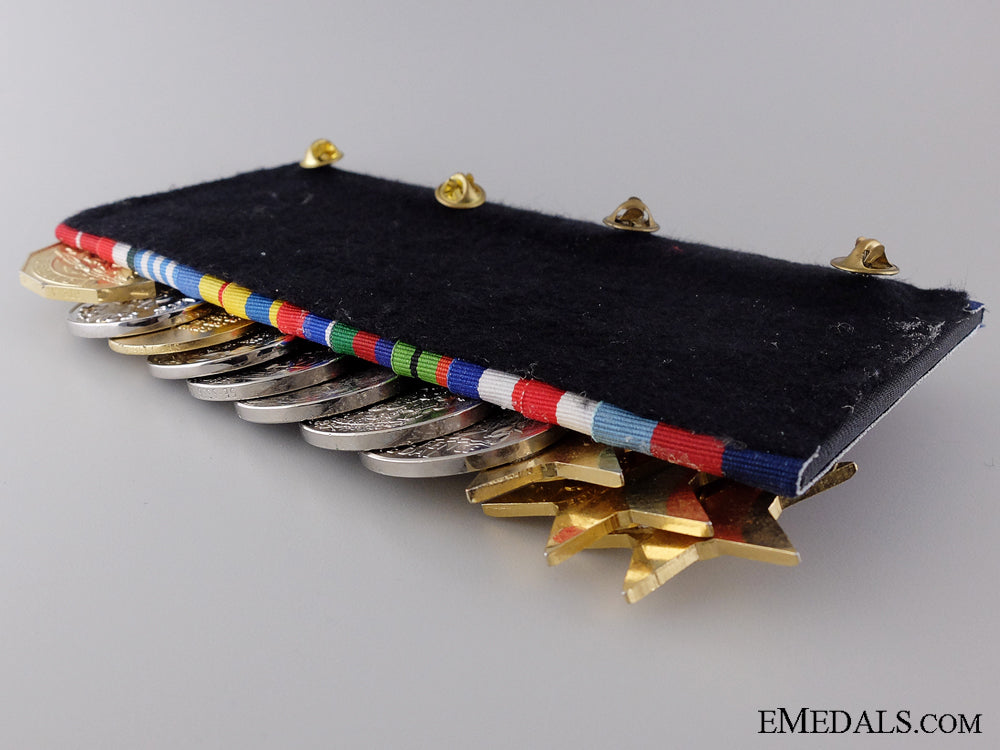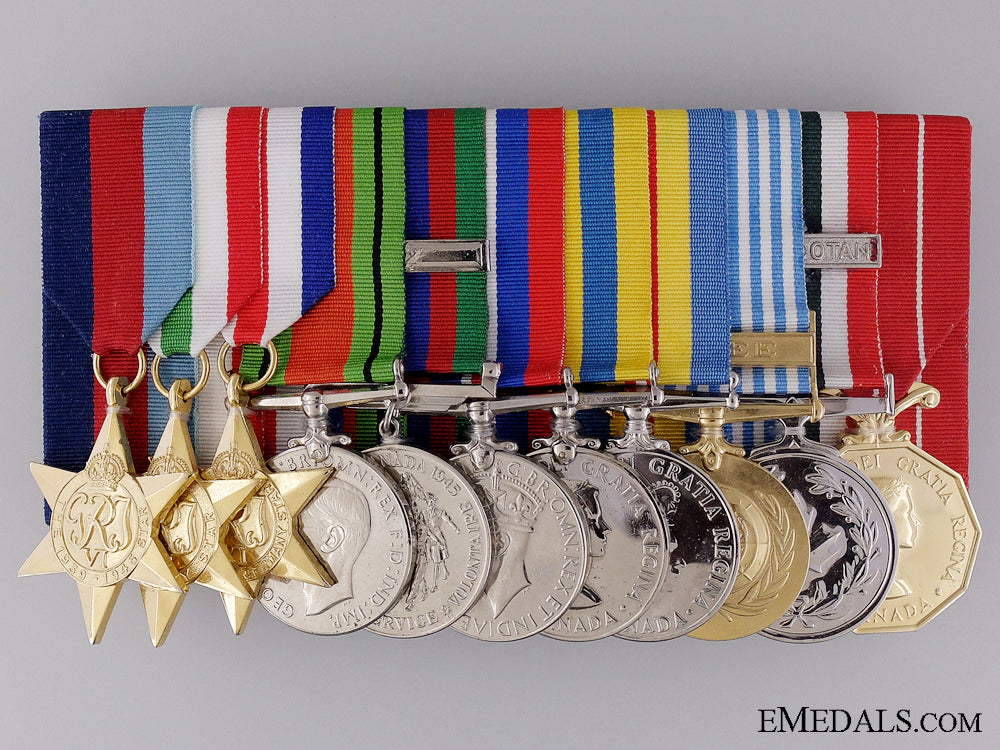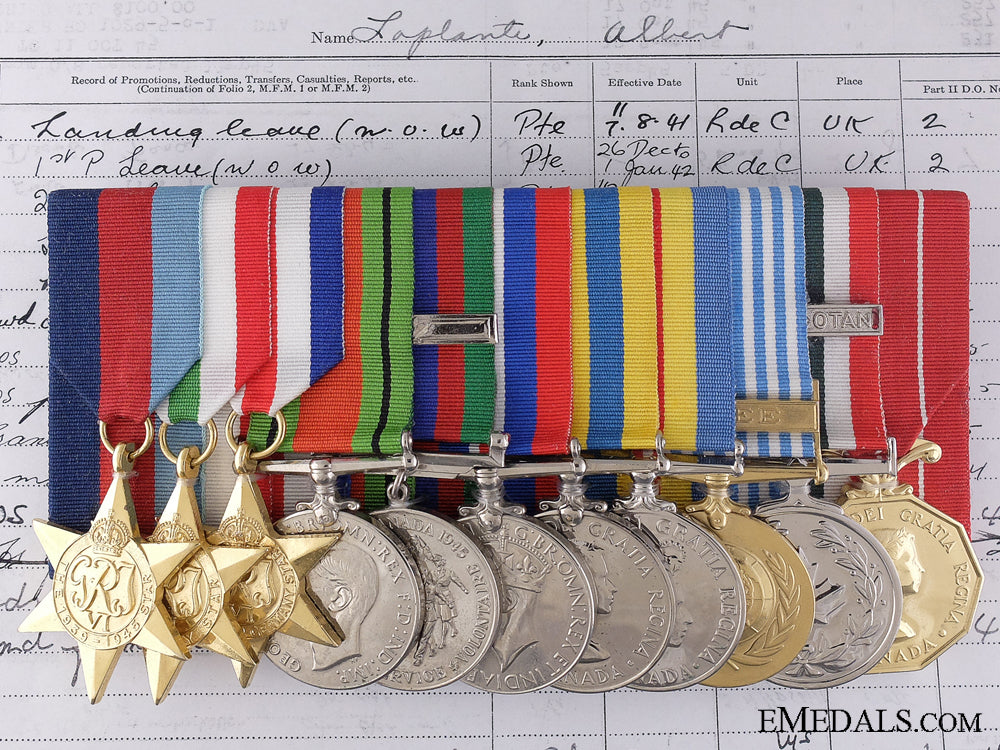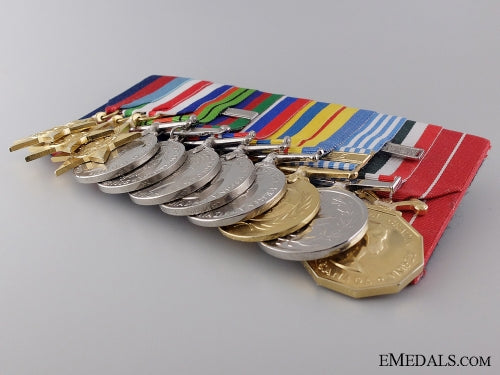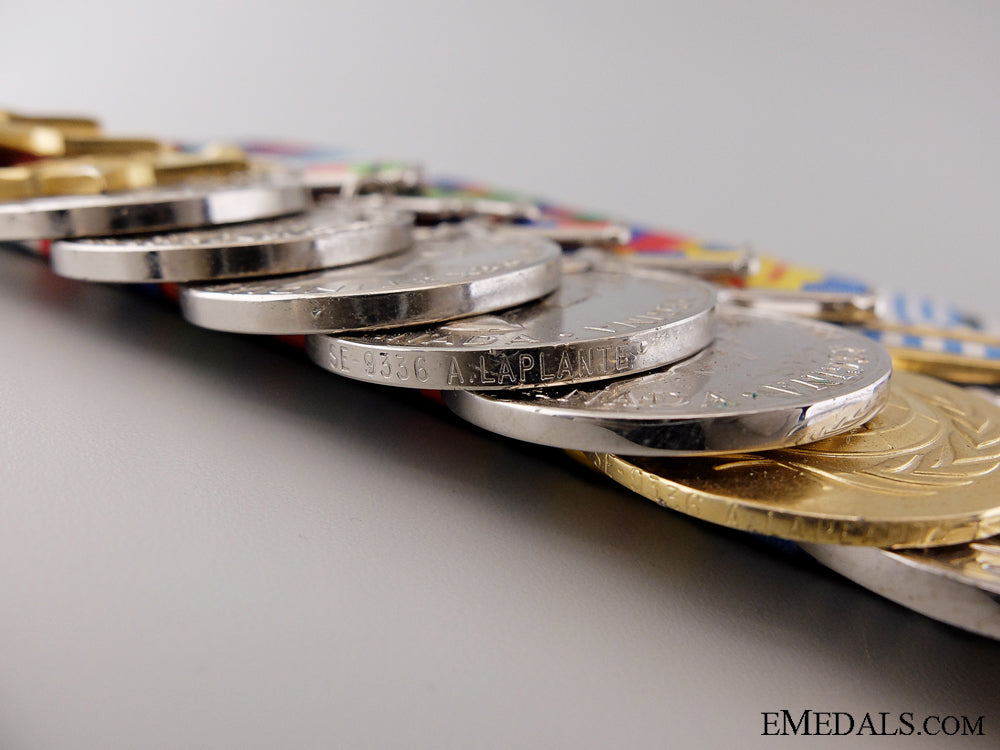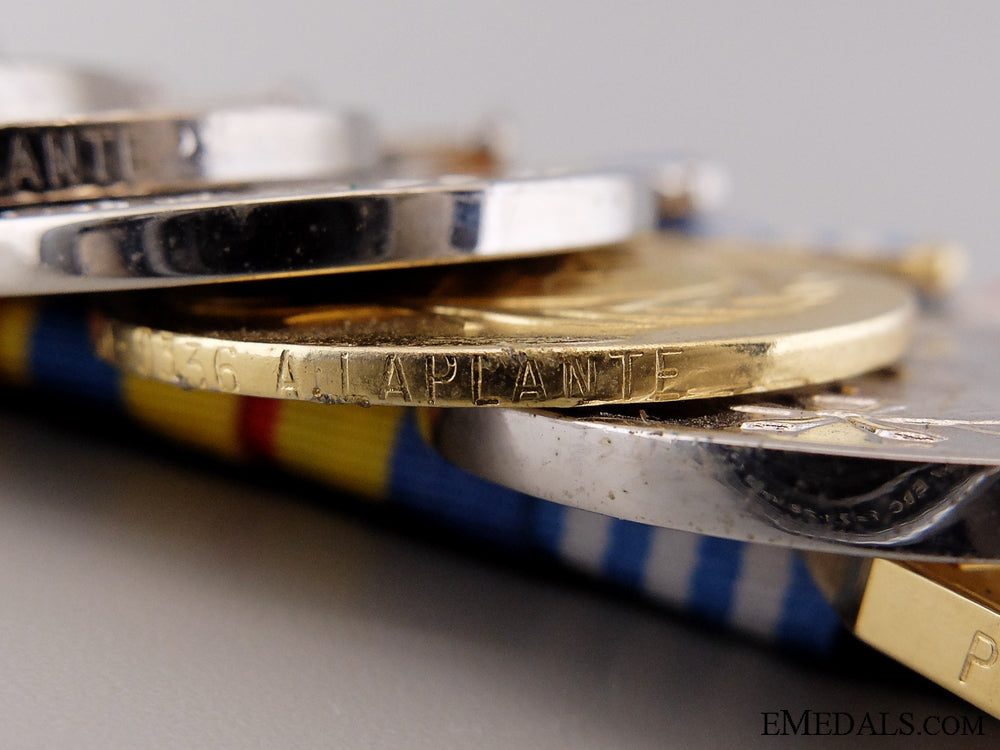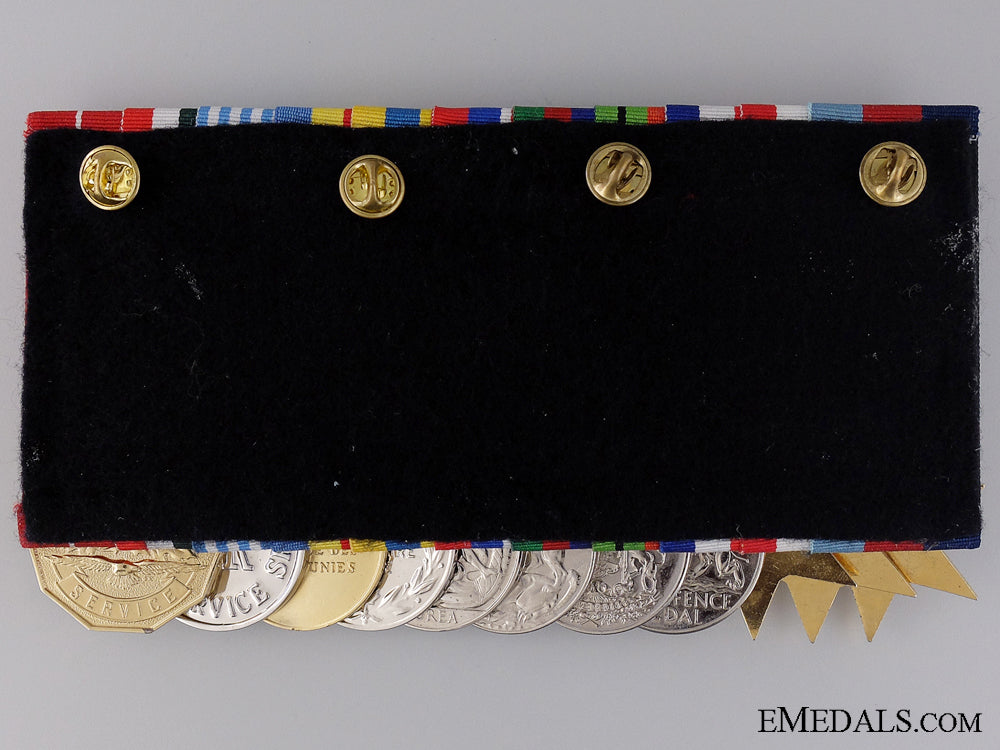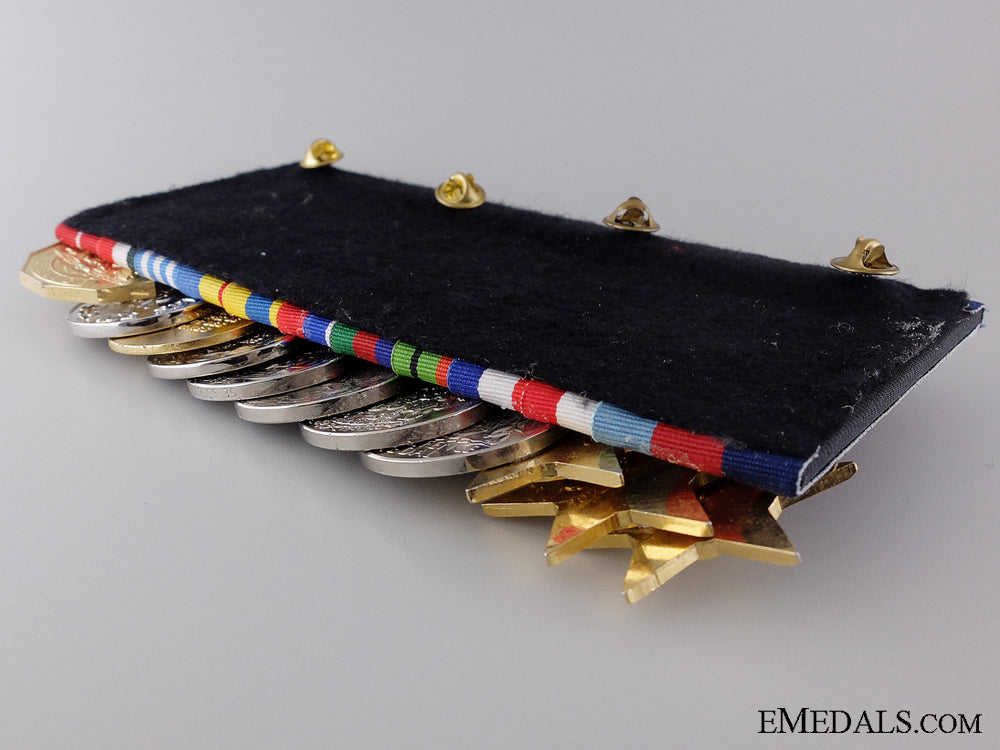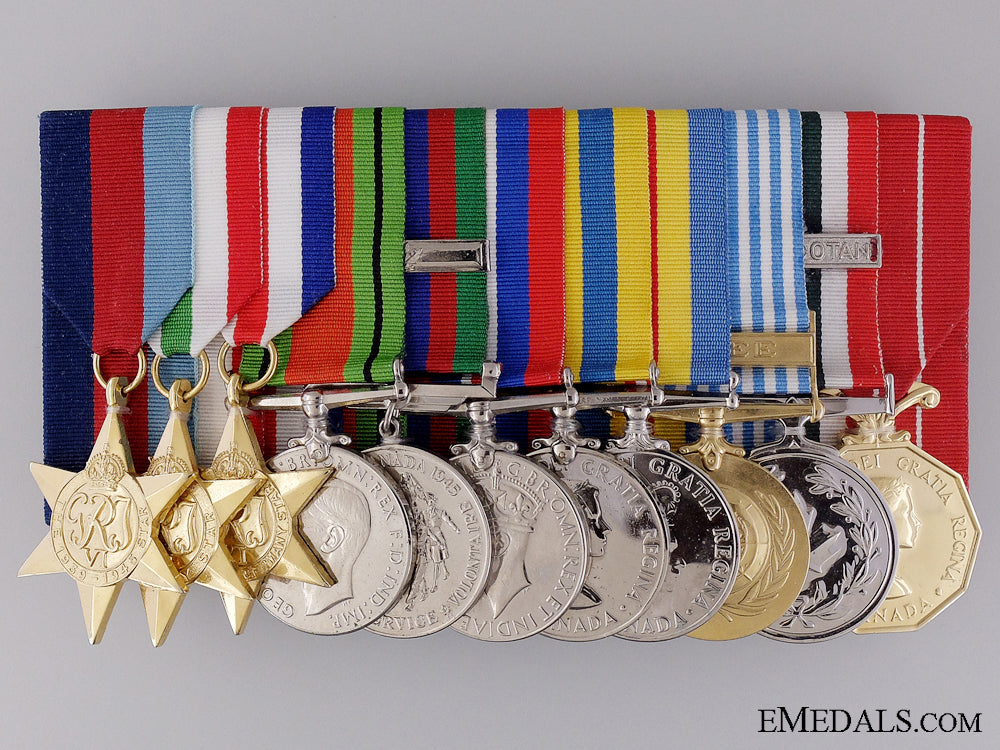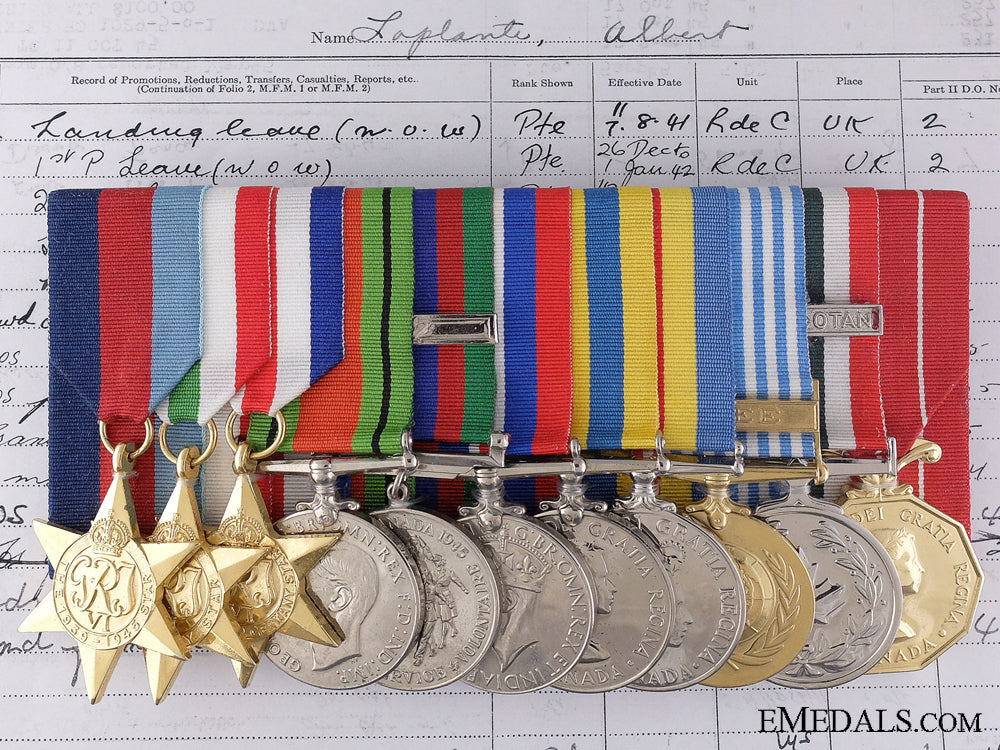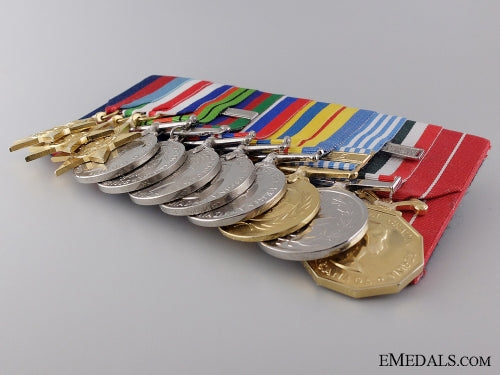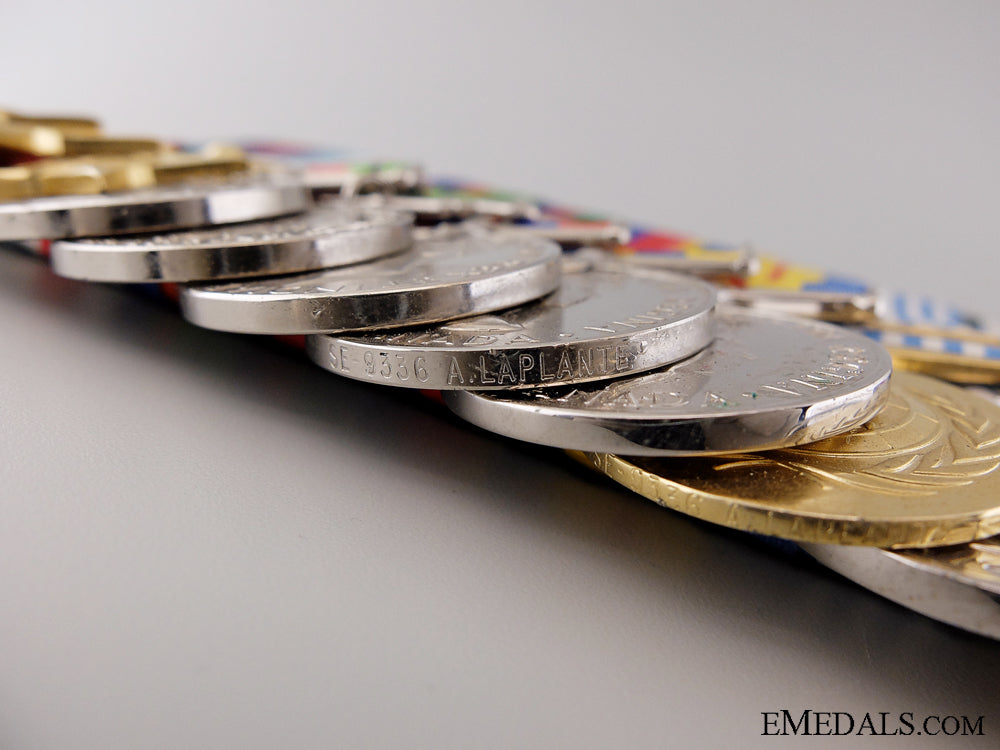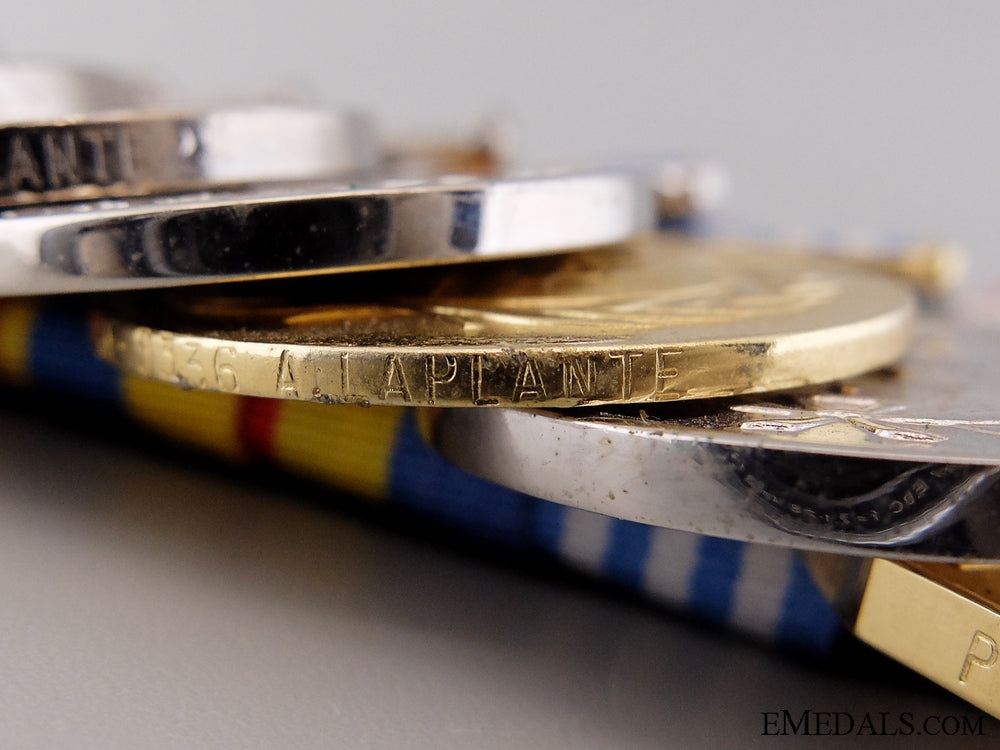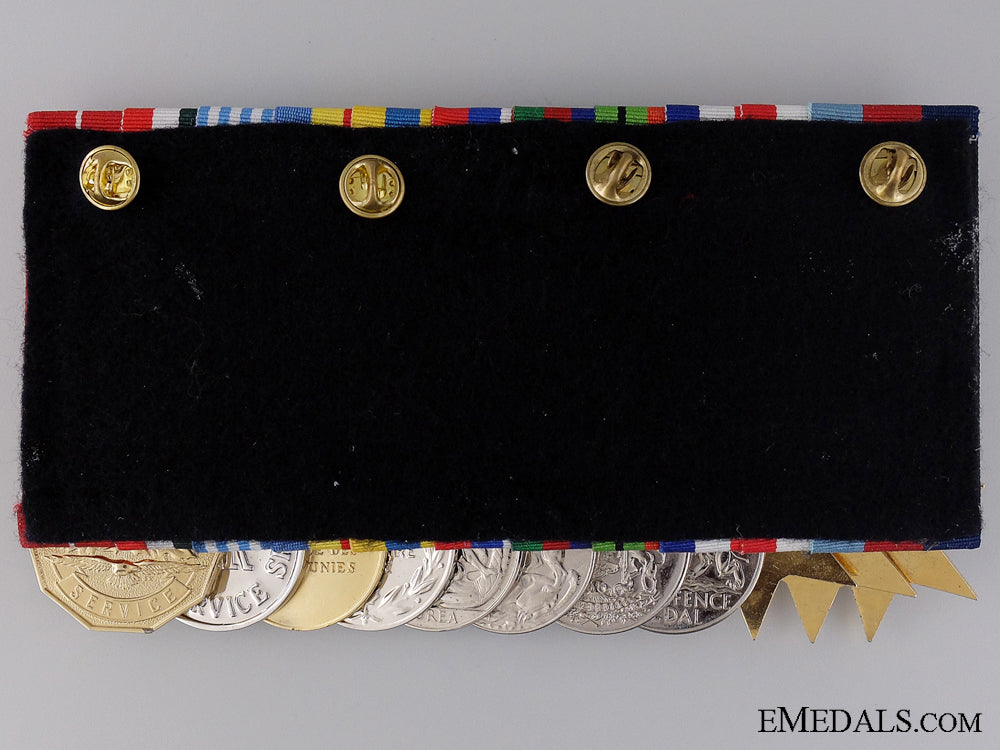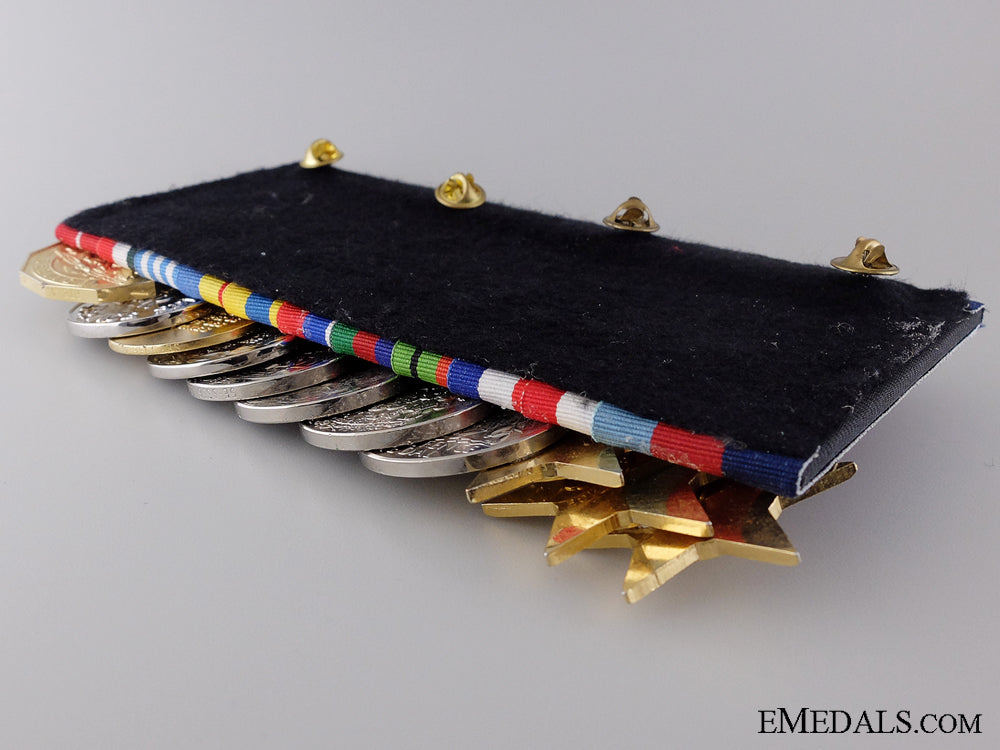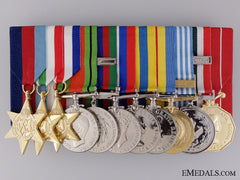Description
A Canadian Korean War Group to the 22nd Regiment - 1939-1945 Star; Italy Star; France and Germany Star; Defence Medal; Canadian Volunteer Service Medal with Overseas Clasp; War Medal 1939-1945; Korea Medal (SE-9336 A. LAPLANTE); Canadian Volunteer Service Medal for Korea; United Nations Korea Medal (SE-9336 A. LAPLANTE); Special Service Medal; and Canadian Forces' Decoration, QEII (PTE A. LAPLANTE). Naming is officially impressed on the KM, privately engraved on the UNKM and officially engraved on the edge of the CFD. Court-mounted, quadruple push pins on the reverse, light contact, plated, near extremely fine. Accompanied by copies of his Attestation Papers, Service Records, Discharge Certificate, Medal Awards Card, Applications for the Award of the Korea Medal, the United Nations Korea Service Medal and the Canadian Forces' Decoration, Statements of Service in the Canadian Armed Forces and assorted letters of correspondence.
Footnote: Albert Laplante was born on February 17, 1913 in St. Honore de Temiscouata, Quebec, the son of Philias Laplante and Lumina Laplante. He completed Grade Six at Ecole Rurale de St Michel in Temiscouata, able to read and speak French, along with being able to speak English and Italian. From 1926 to 1928, he helped his father on the family farm. He was employed as Fees Collector on a Ferry Boat during the summer months and as a Lumberjack during the winter months from 1936 to 1938, then returned to help his father on the farm and in the woods during the winter of 1939/1940. Laplante enlisted for Second World War service, as a Private (E-9336) with the Regiment de la Chaudiere at Valcartier, Quebec, on August 15, 1940, signing his Attestation Paper on August 20, 1940, naming his next-of-kin as his father, Philias Laplante of Temiscouata, stating that he had no previous military service, that he was Single and that his trade was that of "Cultivateur" (Farmer). He was attached to the regiment at Sussex Camp on the 22nd. Eleven months later, he embarked Halifax, Nova Scotia on July 20, 1941, arriving in Gourock, Scotland on the 30th. He was awarded one Good Conduct Badge on July 23, 1942, transferred to No. 5 Canadian Armored Transport on May 30, 1943, the posted to the Canadian Ordnance Reinforcement Unit on October 19, 1943. One week later, he left for the Mediterranean theatre on October 25, 1943, seeing action with the Royal 22nd Regiment in Italy. In the Italian theatre, he was transferred to the Royal Canadian Electrical and Mechanical Engineers on May 15, 1944 and was awarded another Good Conduct Badge on August 15th. Upon the ceasing of hostilities in Italy, he left for North West Europe on February 25, 1945, where he saw action in Holland and Germany until July 30, 1945, when he was transferred to 252 CD/MD 5 for General Duty. During his time in the Army, he trained in the Infantry and qualified in First Aid, and was employed as a Physical Training Instructor and a Despatch Rider. Having been a farmer and lumberjack most of the time while at home, he never took much part in organized sports, but in the service he took part in them. Although he had only a Grade Six education, LaPlante did a great deal of reading and studying while in the Army during the war and the years following, which raised his level of schooling. He trained as a Gunner with a Carrier Platoon, Standing Orders I/C Class III and at one point, was transferred to No. 5 C.A.T. Workshop as a Batman. It was noted at No. 3 Canadian Repatriation Depot on August 20, 1945, that Laplante's future plans were undecided. He felt that after his leave that he would be in a better position to decide on what he was going to do and the attending officer noted that Laplante should have "no difficulty in finding work". Private Laplante was discharged upon demobilization at District Depot, Military District No. 5, in Quebec City, on October 17, 1945, credited with having served forty-nine months overseas, which included Canada (August 15, 1940 to July 20, 1941; September 5, 1945 to October 10, 1945), the United Kingdom (July 21, 1941 to October 24, 1943; July 31, 1945 to September 4, 1945), the Central Mediterranean Area - Italy (October 25, 1943 to February 25, 1945) and North Western Europe - Germany and Holland (February 26, 1945 to July 30, 1945). For his Second World War service, he was awarded the 1939-1945 Star, the Italy Star, the France and Germany Star, the Defence Medal, the Canadian Volunteer Service Medal with Overseas Clasp and the War Medal 1939-1945, entitled to wear the War Service Badge, Class "A", number 908397. After his discharge, he was employed for three months as a Lumberjack until early 1946, when he re-enlisted with the Interim Force at No. 5 District Depot, on January 25, 1946 at La Citadelle in Quebec City, assigned to the 2nd Battalion, Royal 22nd Regiment on February 11th. He signed his Attestation Paper as a Private (SE-9336), on January 25, 1946, naming his next-of-kin as his mother, Lumina Laplante of Cabano, Quebec, stating that he had previous military service during with the Regiment de la Chaudiere from August 15, 1940 to October 17, 1945, that he was Single and that his trade was that of "Bûcheron" (Woodcutter). He signed a second Attestation Paper with the Royal 22nd Regiment on October 1, 1946. He was admitted to Quebec Military Hospital on two occasions, for six and eight day stays respectively (April 10 to 16 and June 3 to 11, 1947). In 1948, he volunteered for para training, later being sent to Fort Churchill for two and a half months training, from January 16 to March 3, 1949. He re-engaged for five years' service on October 1, 1949 and completed the Winter Indoctrination Course No. 1 over the winter of 1949/1950. He was posted to the Canadian Joint Air Training Centre at Rivers, from April 12 to July 1, 1950, where was awarded seventy-two hours detention for an offence contrary to AA Section 19 (drunkenness). As it was his First Offence, he forfeited three days' pay as a penalty. In May 1950, it was noted that Laplante, now age 36, had volunteered two years previous for para training. Lieutenant J.G. Doyle, Personnel Officer stated in his report that in Laplante's case, "adventure and change from routine seems to be the only important factors in his motivation. Says he has no fears of injury or height. Maintains a good attitude to unit and general training. Claims he now has control of his drinking habits. Records indicate some excess in this habit. He likes flying and gliding. Seems enthusiastic but considering his motivation he may be easily discouraged. MMPI indicates tendencies on hypochondriac and hysteria scales." However, those circumstances notwithstanding, Laplante was allowed to para train, successfully completed Para Jump Course No. 56 on June 30, 1950. He was attached to Shilo for Rations and Quarters, from June 17 to 21, 1950. He returned to the Royal 22nd Regiment at Valcartier, Quebec for a six month and a half month posting, from July 1, 1950 to January 14, 1951, when he returned to Fort Churchill for six weeks, from January 14 to February 28, 1951. Following his tenure at Fort Churchill, he returned to Valcartier, where he qualified under CAT Specs as a Leading Infantryman Group 1 on December 1, 1951. With hostilities fully underway in Korea, Infantryman Laplante embarked North America on March 18, 1952, disembarking in the Far East on April 9th. He was transferred to the 25th Canadian Infantry Brigade in the Korean theatre, on June 15, 1952 and after six months, returned to the Royal 22nd Regiment on December 18th. He embarked Korea on April 26, 1953, arriving in Japan the next day. One week later, he left the Far East, disembarking Japan on May 3, 1953, arriving in Canada on the 15th and posted to No. 3 Personnel Depot. Laplante was credited with having served in Canada and the Far East and was awarded the Korea Medal and the United Nations Korea Medal. He returned to Valcartier on July 21, 1953, where he re-engaged for three years' service on October 1, 1954. He is on record as having applied for the United Nations Korea Medal (1954) and the Korea Medal (1955) and later, the Canadian Forces' Decoration (1959). Laplante embarked Canada on October 4, 1955, arriving in Holland on the 15th and posted to the Canadian Army Central Europe. He was cautioned for an offence on March 29, 1956, yet awarded his First Good Conduct Badge on April 30th and awarded a Second Good Conduct Badge the same day. He was sentenced to six days Confinement to Barracks on September 12, 1957 and re-engaged for three years' service on October 1, 1957. After two years' service in Central Europe, he embarked Holland on October 5th, arriving in Canada on the 14th and returned to Quebec City. He was sentenced again, this time to fourteen days Confinement to Barracks on February 17, 1958, likely for drunkenness on this and the other previously stated occasions, as he had a history of this throughout his Army career. He qualified as an Infantryman M Group 1 on December 4, 1958, awarded the Canadian Forces' Decoration on November 19, 1959 and re-engaged for three years' service on October 1, 1960. He passed the St. John Ambulance Fundamentals of First Aid Course on April 27, 1960 and was granted his 3rd Good Conduct Badge on May 19, 1960. His health was to become a cause for concern through 1962 and 1963. He was admitted to Quebec Military Hospital for eight days on February 1, 1962, before being discharged on the 9th, and on two other occasions: from October 22 to November 2, 1962 (eleven days) and from February 12 to February 28, 1963 (sixteen days). He was posted to No. 3 Personnel Depot for release on March 5, 1963 and was hospitalized in the interim for one day at Quebec Military Hospital on March 28th, before being discharged the following day. Laplante was "Honorably Released" from service at No. 3 Personnel Depot in Quebec City, on September 29, 1963, at the age of 50, giving his future address as St. Michel de Squateck, County Temiscouata, Quebec.

